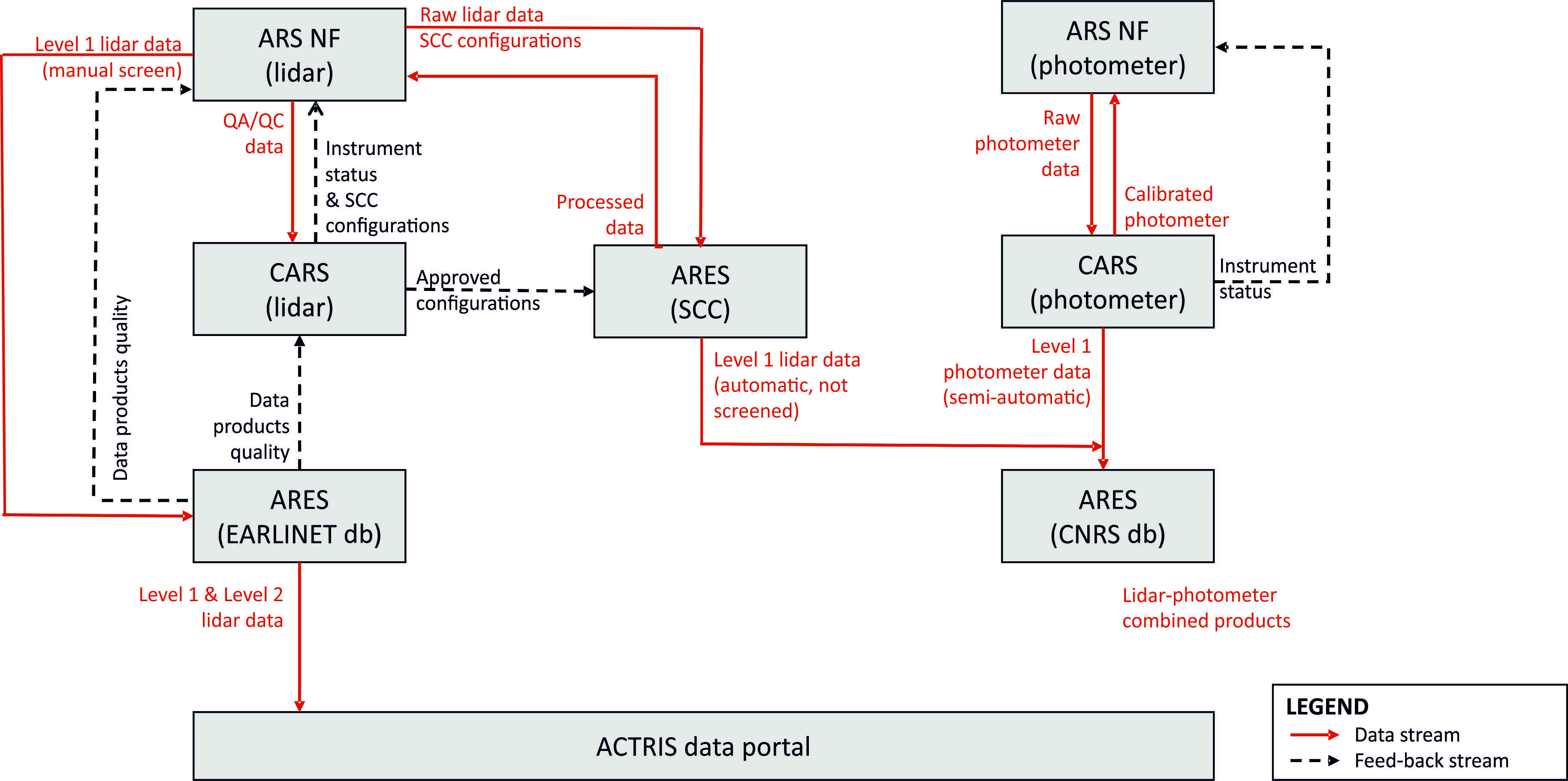Contacts: | Doina Nicolae (CARS leader) | Philippe Goloub (CARS deputy leader)
Shortcuts: | Guidelines & Tools | News & Events
Aerosol Remote Sensing National Facilities
ACTRIS aerosol remote sensing facilities operate co-located aerosol high-power lidars and automatic sun/sky/lunar photometers.
Minimum requirements
The minimum setup of an ACTRIS aerosol remote-sensing station consists of a one-wavelength Raman or HSR lidar with polarization discrimination capability and a sun/sky photometer. The photometer has to be set up for automatic operation following the ACTRIS/AERONET standards. Photometer Level 0 data have to be uploaded to the TC in NRT. The lidar must be operated following the measurement schedule for climatological observations and shall in addition contribute to the observation of special events and satellite validation activities. Lidar data have to be uploaded to the DC unit for central processing in NRT. Calibration and quality assurance tools for photometer and lidar have to be applied following the guidelines of CARS.
Optimum setup
The optimum setup of an ACTRIS aerosol remote-sensing station consists of a three-wavelength Raman or high-spectral-resolution (HSR) lidar with polarization discrimination capability and an automatic sun/sky and moon photometer (optionally also polarized) according to ACTRIS/AERONET standards, both operating continuously. Level 0 data of the instruments are uploaded automatically to the respective units of the DC (lidar) or TC (photometer) for processing in RRT or NRT. Calibration and quality assurance tools for photometer and lidar instruments are applied following the guidelines of CARS.
- How to become an ACTRIS aerosol remote sensing National Facility?
-
For applying as an ACTRIS aerosol remote sensing National Facility (observation platform or mobile facility) please visit the NF labelling page.
- What I have to do as an ACTRIS aerosol remote sensing National Facility?
-
After the initial acceptance, you have to follow the guidelines and procedures issued by CARS and ARES. This includes participation to webinars, workshops and other activities launched by CARS and ARES. The most relevant steps are:
- Submission of the lidar Handbook of Instruments
- Performance and submission of the QA tests
- Calibration of the photometer
- Setup of the lidar operational configuration (SCC)
- Performance and submission of the measurements
The final certificate will be granted when all requirements are fulfilled, including availability of the QA/QC data products in the ACTRIS Data Portal. The performance of the National Facility is evaluated annually.
- Where can I found the guidelines, procedures and tools?
-
Guidelines, standard operation procedures,standard quality assurance procedures and tools can be found at: Documents. Please check the page regularly.
Simplified workflow for operational products

Aerosol high-power lidar raw data acquired at the National Facilities (NF) are mandatorily processed at the ACTRIS DC using the Single Calculus Chain (SCC). The NF is responsible for reporting and updating in the SCC the technical information about the instrument, and setting the appropriate SCC configurations to process the data.
The automatic sun/sky/lunar photometer raw data are transferred in NRT (< 1h) to one of the three dedicated databases in France, in Spain for European users (in the USA for other users). All three databases are synchronized. The NRT transfer to the database is mandatory to monitor the instrument and to perform NRT processing and product delivery.
Operational support
The complete list of operation support can be found here: Operation support for ACTRIS National Facilities
Operational support which is organized by CARS on regular basis:
| Operation support | Instrument | Frequency | Modality of provision |
|---|---|---|---|
|
Training at CARS workshops |
|
Twice per year |
Call launched by CARS |
|
Technical webinars |
|
Monthly |
Call launched by CARS |
|
Calibration of field photometers |
|
Yearly |
Call launched by CARS |
|
High-power lidar performance tests |
|
Yearly |
Call launched by CARS |
|
Site audits |
|
Not regular |
Call launched by CARS |
|
Annual evaluation of the NFs |
|
Yearly |
Call launched by CARS |










